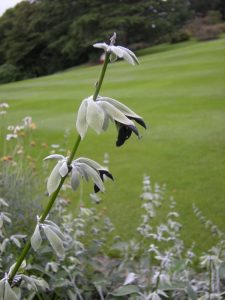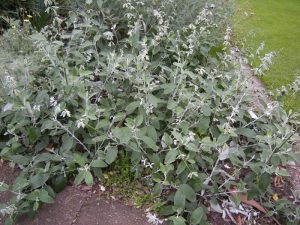Take a look at the semi-tender perennials in the borders to the south of the Glasshouses Front Range. In one corner is the grey-leaved Salvia discolor, a woody perennial from Peru.
The dark, almost black, typical Labiatae flower is sheltered beneath the grey, leaf-like sepals. These flowers have a smell so distinctly blackcurrant you could believe you were holding the berries. A pool of very sweet nectar lies in the throat of the flower.
As the petals drop, the sepals are left intact and wide-mouthed, resembling a fish gasping for air. These flowers are grouped in whorls, known as verticillasters, around the stem.
The stems, as they develop, are green and covered in a highly sticky substance that all manner of aphids, small flies and airborne seeds attach to. Maturing, this substance loses its effect and the stem turns white, as do the reverse of the leaves.
This lax-growing plant reaches to 1m with shoots continually dividing to cover the ground. It is soon defoliated by autumn frosts.


